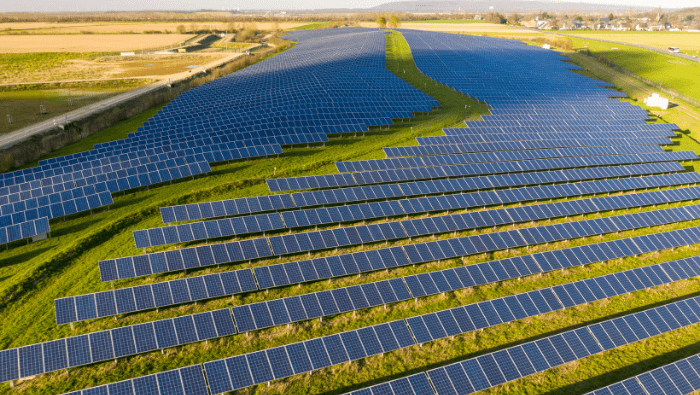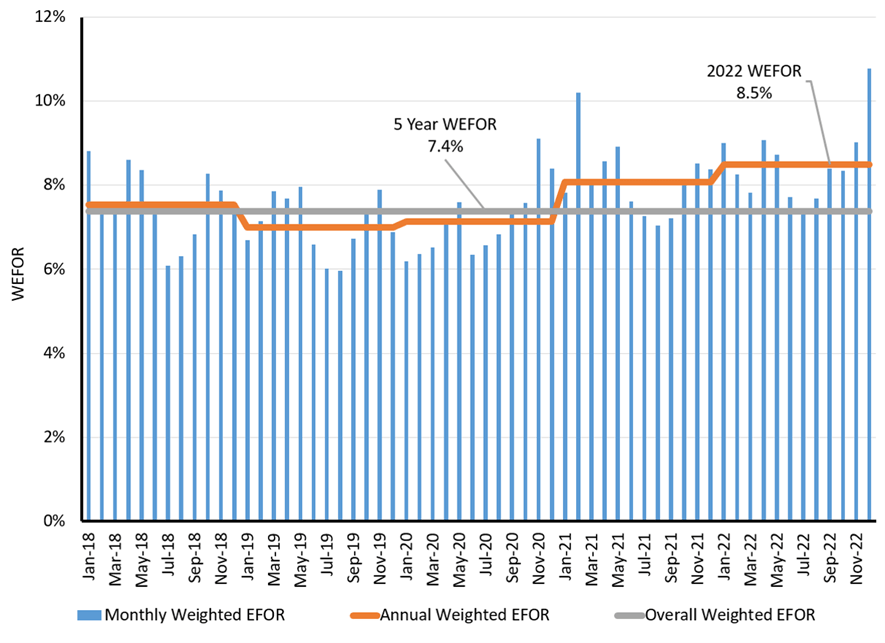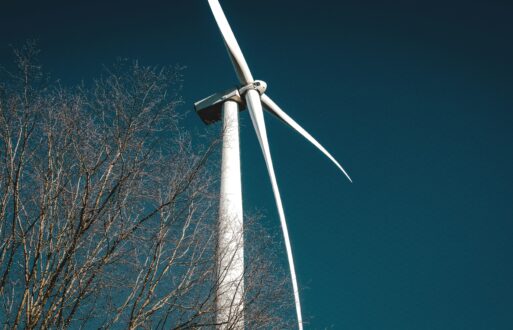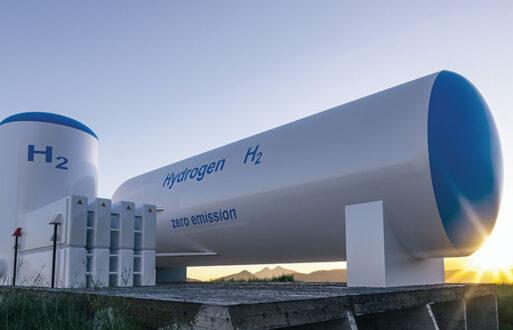The 2024 calendar year will bring about several changes in Generating Availability Data System (GADS) reporting, the most exciting being reporting for solar plants.
In this post, we’ll walk you through the conventional GADS changes and discuss the upcoming 2024 GADS renewable requirements.
NERC GADS background
The North American Electric Reliability Corporation (NERC) was founded in 1968 due to the northeast blackout of 1965 to ensure the North American bulk power system remains highly available. In 1982, the GADS was introduced to collect data on unit operating histories formally. NERC now collects data on more than 5,000 generation units annually through the GADS.
The information collected is used for research on plant outages, availability analyses, and improving plant performance.
Concerning trends in availability
Over the last several years, thermal unit availability has trended down. Using the NERC Weighted Equivalent Forced Outage Rate (WEFOR), the current five-year availability probability is 92.6%, while the 2022 availability probability is 91.5%. The last four years have seen a continual decrease in the availability of thermal units.
The same holds true for the reported wind units in that time frame: five-year availability probability is 83.1%, and 2022 availability probability is 82.6%, with the last four years also showing a decrease in availability.
Focus on renewables
Many utilities are focusing on growing their renewable portfolios. This recent inrush of additional renewable resources has left some reporting gaps in what information was available in the GADS. NERC was monitoring those changes and started capturing information about renewables separately. Beginning with a phased approach in 2018, Winds GADS allowed for the capture of wind-specific information for additional analysis. In 2024, NERC is again expanding its renewable dataset by starting a separate process to capture Solar GADS information.
All three of these reports will additionally contain a new key piece of mandatory information for 2024.
Contributing operating conditions
With the declining overall availability of the North American bulk electric system and the new additions of renewable resources, NERC has smartly added a new required reporting data point: Contributing Operating Conditions. This new data point focuses on providing additional context for each reported event. In addition to capturing “what failed,” it will allow NERC to understand “conditions under which it failed.”
As you read through the possible conditions, most are environmental. This process makes sense, as the growing renewable fleet is powered by external forces of nature (wind and solar) and is, therefore, more susceptible to environmental changes.
Impact on utilities: Solar GADS
Starting on Jan. 1, 2024, you’ll need to change how you report your NERC GADS units. You’ll have to start reporting those units through the new GADS Solar process if you have large solar plants with a combined Inverter Group Installed Capacity of 100 MW or more.
This process is entirely new, and the Contributing Operating Conditions are built in from the beginning.
Impact on utilities: conventional GADS
For all conventional GADS NERC units, you’ll need to use the new Contributing Operating Condition and apply the appropriate alphanumeric character to each contributing cause. Wind units will still report through the Wind GADS process and all other units will continue to report through the conventional GADS process.
These data will be captured in the Event Report file, and, as this is a fixed width file, NERC will drop the voluntary “Problem Alert” character in record two at starting position 45 and use that for the alphanumeric “Contributing Operating Condition” instead.
The Conventional GADS DRI changes (Section III 25-30) sum up the user changes quite nicely:
“NERC uses the contributing Operating Condition to differentiate between generating units that go out during large-scale environmental impacts such as hurricanes, intense cold, or similar events. If the event would have happened even if the extreme conditions did not exist, then you would report No Contributing Condition. Most reported events will occur during normal operating conditions and will report No Contributing Condition.”
Once a Contributing Operating Condition has been deemed a contributing factor, you must choose one of the 14 conditions provided. NERC provides additional guidance here as well:
“When more than one Contributing Operating Condition can be assigned for a single cause, report the most impactful Contributing Operating Condition. If multiple causes are reported, the most impactful Contributing Operating Condition for each cause should be selected.”
You can review Table III-6 in the 2024 DRI for additional information.
Impact on utilities: Wind GADS
This change is by far the largest. Up until 2024, Wind GADS required a Component Record to be uploaded for each sub-group. Starting in 2024, plants will be required to upload an Event Report instead. This report is entirely different in what it contains and at what level the data are collected. This location is where you can find the Contributing Operating Condition.
Additionally, there were also changes to simplify the Configuration Data report and an overall addition of Energy Storage reporting for co-located facilities.
Stay ahead of NERC GADS changes
Learn how to manage the new NERC GADS requirements effectively and ensure compliance. Our experts will guide you through the latest updates and provide practical solutions in the webinar “Managing NERC GADS Requirements in Today’s Energy Transition.”









